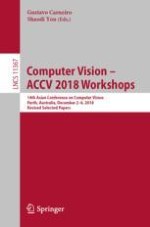2019 | OriginalPaper | Buchkapitel
Prediction Based Deep Autoencoding Model for Anomaly Detection
verfasst von : Zhanzhong Pang, Xiaoyi Yu, Jun Sun, Inakoshi Hiroya
Erschienen in: Computer Vision – ACCV 2018 Workshops
Aktivieren Sie unsere intelligente Suche, um passende Fachinhalte oder Patente zu finden.
Wählen Sie Textabschnitte aus um mit Künstlicher Intelligenz passenden Patente zu finden. powered by
Markieren Sie Textabschnitte, um KI-gestützt weitere passende Inhalte zu finden. powered by
